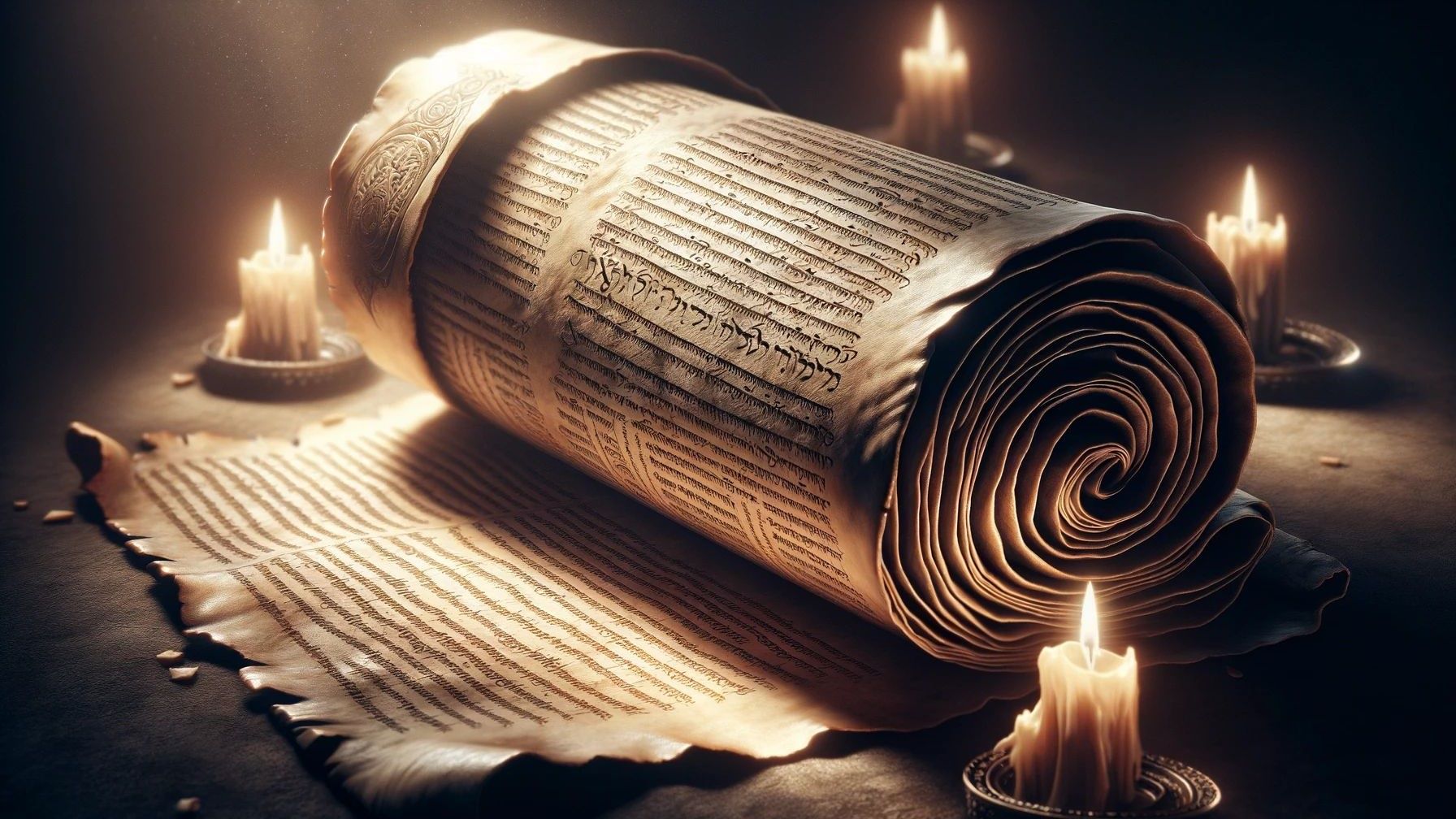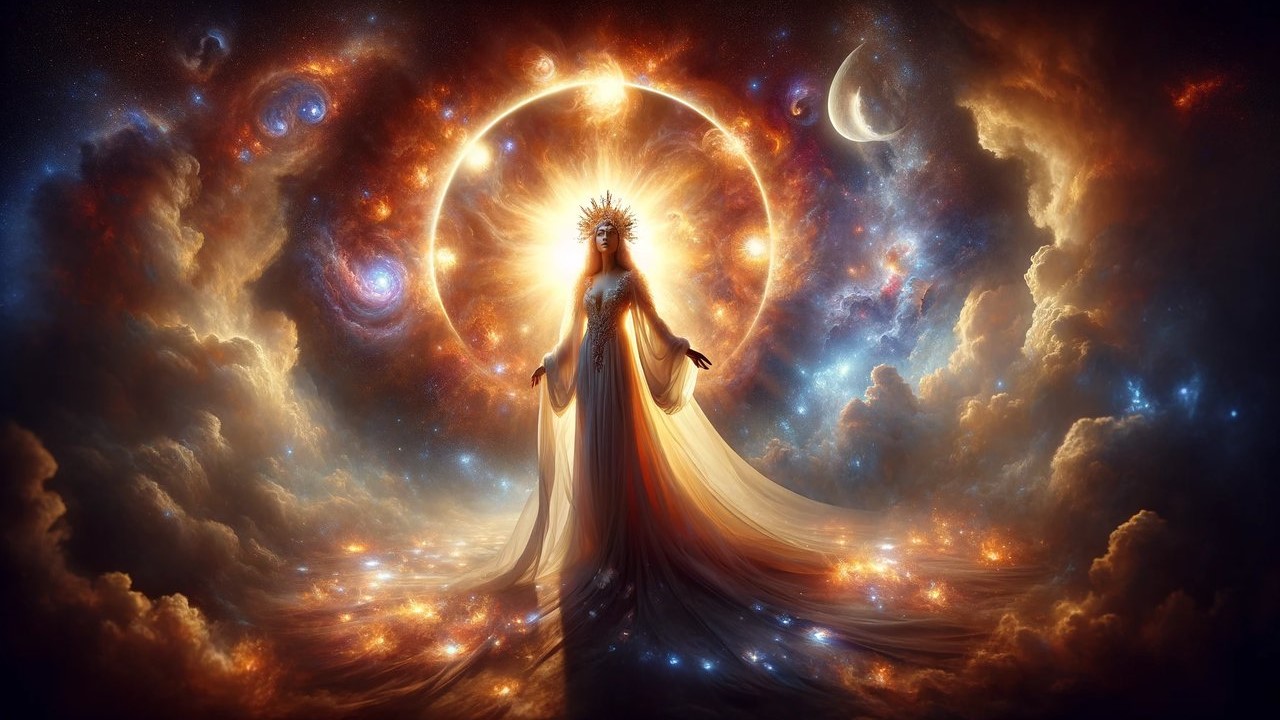Home>Bible Facts>What Are The Four Creatures In The Book Of Revelation


Bible Facts
What Are The Four Creatures In The Book Of Revelation
Published: February 11, 2024
Jason DeRose, Managing Editor at Christian.net, uses his expertise in religion and journalism to deepen understanding of faith's societal impacts. His editorial leadership, coupled with a strong academic background, enriches the platform’s diverse content, earning him recognition in both journalism and religious circles.
Discover the significance of the four creatures mentioned in the Book of Revelation and explore fascinating Bible facts. Uncover their symbolic meanings and relevance in biblical prophecy.
(Many of the links in this article redirect to a specific reviewed product. Your purchase of these products through affiliate links helps to generate commission for Christian.net, at no extra cost. Learn more)
Table of Contents
Introduction
The Book of Revelation, the final book of the Christian Bible, is a profound and enigmatic text that has captivated readers for centuries. Within its pages, there are vivid descriptions of heavenly visions, symbolic imagery, and prophetic messages. One of the most intriguing elements of the Book of Revelation is the depiction of four mysterious creatures surrounding the throne of God. These creatures, often referred to as the "four living beings" or "four living creatures," are described in great detail and hold significant symbolic meaning within Christian theology.
The imagery of these four creatures is found in Revelation 4:6-8, where the apostle John provides a detailed account of his vision of the heavenly throne room. The creatures are described as having unique and awe-inspiring characteristics, each possessing multiple faces and wings. They are depicted as being covered in eyes, symbolizing their profound insight and awareness. These creatures are also described as being full of eyes, both in front and behind, signifying their unwavering vigilance and perception.
The significance of these four creatures extends beyond their striking appearance. They are often interpreted as representing different aspects of creation and embodying key attributes that reflect the nature of God. Throughout history, theologians, scholars, and believers have sought to unravel the symbolic meanings behind these creatures, delving into the rich tapestry of biblical imagery and theological interpretation.
As we explore the identities and symbolism of these four living beings, it becomes evident that they serve as powerful symbols of God's sovereignty, wisdom, and divine order. Their presence in the heavenly throne room underscores the majesty and transcendence of God, inviting contemplation and reverence. By delving into the profound symbolism of these creatures, we gain deeper insights into the intricate tapestry of biblical imagery and the profound truths encapsulated within the Book of Revelation.
Read more: What Is Babylon In The Book Of Revelation
The Lion
The first of the four living creatures depicted in the Book of Revelation is the majestic and awe-inspiring lion. In Revelation 4:7, the apostle John describes the lion-like creature as having the appearance of a lion, signifying strength, power, and royalty. The lion has long been regarded as the king of the beasts, embodying courage, leadership, and regal authority. In the context of the heavenly vision, the lion symbolizes the majestic sovereignty of God, reflecting His unrivaled dominion and reign over all creation.
The imagery of the lion holds profound significance within biblical and cultural contexts. Throughout the Old and New Testaments, the lion is used as a powerful symbol to represent various aspects of God's character and divine attributes. In the prophetic writings of the Old Testament, the lion is often associated with the concept of divine judgment and the manifestation of God's righteous anger against injustice and wickedness. The lion's roar, a symbol of strength and authority, evokes a sense of awe and reverence, underscoring the divine majesty and power of God.
Furthermore, the lion is intricately linked to the lineage of Jesus Christ, who is often referred to as the "Lion of Judah" in Christian theology. This evocative title, derived from the imagery found in the book of Genesis and the prophetic blessings of Jacob, signifies the royal lineage and authority of Christ as the ultimate fulfillment of God's promises. The association with the lion underscores Christ's role as the triumphant and exalted ruler, whose sovereignty extends beyond earthly realms into the divine and eternal.
In the context of the heavenly vision in Revelation, the lion's presence among the four living creatures serves as a potent symbol of God's unassailable authority and divine kingship. The lion's unwavering gaze and regal bearing convey a sense of awe and reverence, inviting contemplation of God's majestic sovereignty and righteous rule. As the apostle John beheld this awe-inspiring creature, he was confronted with the profound reality of God's transcendent glory and unrivaled dominion, inspiring profound reverence and worship.
The symbolism of the lion within the heavenly vision of Revelation resonates with believers, serving as a powerful reminder of God's sovereignty, strength, and unwavering presence. The lion's presence among the four living creatures encapsulates the profound truth of God's majestic kingship and divine authority, inviting contemplation and reverence. In the intricate tapestry of biblical imagery, the lion stands as a timeless symbol of God's unshakable reign and eternal sovereignty, inspiring awe and adoration for the King of kings and Lord of lords.
The Ox
The second living creature depicted in the Book of Revelation is the enigmatic and powerful ox. In Revelation 4:7, the apostle John describes the ox-like creature as having the appearance of an ox, signifying steadfastness, service, and sacrificial strength. The imagery of the ox holds profound significance within biblical and cultural contexts, evoking themes of labor, provision, and unwavering dedication.
The ox has long been revered as a symbol of strength, endurance, and agricultural productivity. In ancient agricultural societies, the ox played a pivotal role in plowing fields, tilling the land, and carrying heavy loads. Its tireless labor and unwavering strength made it an indispensable partner in the cultivation of the land, embodying the virtues of diligence, perseverance, and humble service.
Within the context of the heavenly vision in Revelation, the ox symbolizes the sacrificial nature of Christ and the redemptive work of the cross. The ox's association with labor and service reflects Christ's role as the Suffering Servant, who bore the weight of humanity's sin and offered Himself as a sacrificial offering for the salvation of humanity. The ox's presence among the four living creatures serves as a poignant reminder of Christ's humility, selfless service, and redemptive mission, inviting contemplation of the profound love and sacrifice demonstrated through His earthly ministry.
Furthermore, the ox is intricately linked to the concept of yoking, a symbol of submission and partnership. In the teachings of Jesus, the imagery of yoking is used to illustrate the call to discipleship and the invitation to join in partnership with Christ. The ox's representation within the heavenly vision underscores the invitation to align with Christ, to take His yoke upon us, and to walk in humble obedience and service. The ox's steadfast presence among the four living creatures embodies the enduring call to embrace the sacrificial nature of discipleship and to labor alongside Christ in the redemptive work of the Kingdom.
In the intricate tapestry of biblical imagery, the ox stands as a timeless symbol of Christ's sacrificial love, humble service, and enduring strength. Its presence among the four living creatures encapsulates the profound truth of Christ's redemptive mission and sacrificial love, inspiring reverence and gratitude for the One who bore the cross for the salvation of humanity. The ox's unwavering dedication and sacrificial strength serve as a powerful reminder of Christ's invitation to take up the yoke of discipleship, to labor in His service, and to partake in the redemptive work of the Kingdom of God.
The Man
The third living creature depicted in the Book of Revelation is the enigmatic and profound figure of the man. In Revelation 4:7, the apostle John describes the man-like creature as having the appearance of a man, evoking themes of humanity, compassion, and divine incarnation. The imagery of the man holds profound significance within biblical and theological contexts, reflecting the profound mystery of the incarnation and the redemptive significance of Christ's humanity.
The depiction of the man among the four living creatures serves as a powerful symbol of Christ's dual nature as fully divine and fully human. In Christian theology, the concept of the Incarnation holds central importance, affirming the profound truth of God taking on human flesh in the person of Jesus Christ. The man-like creature in the heavenly vision embodies the mystery and wonder of the Incarnation, inviting contemplation of the divine condescension and the profound solidarity of God with humanity.
Furthermore, the man-like creature symbolizes the compassionate and empathetic nature of Christ, who entered into the human experience, sharing in our joys, sorrows, and struggles. The apostle John's vision of the man-like creature underscores the profound truth of Christ's identification with humanity, His empathy for our frailties, and His redemptive mission to reconcile humanity to God. The presence of the man among the four living creatures serves as a poignant reminder of Christ's profound love and solidarity with humanity, inspiring reverence and gratitude for the One who bore the cross for the salvation of humanity.
In the intricate tapestry of biblical imagery, the man stands as a timeless symbol of Christ's humanity, compassion, and redemptive mission. His presence among the four living creatures encapsulates the profound truth of the Incarnation and the divine solidarity with humanity, inviting contemplation and reverence for the One who, being in very nature God, did not consider equality with God something to be used to his own advantage; rather, he made himself nothing by taking the very nature of a servant, being made in human likeness. And being found in appearance as a man, he humbled himself by becoming obedient to death— even death on a cross! (Philippians 2:6-8, NIV).
The man-like creature in the heavenly vision serves as a powerful reminder of the profound truth of Christ's incarnation, His solidarity with humanity, and His redemptive love, inspiring awe and adoration for the One who, in the fullness of time, entered into human history to bring salvation and reconciliation to all who believe.
The Eagle
The fourth living creature depicted in the Book of Revelation is the majestic and awe-inspiring eagle. In Revelation 4:7, the apostle John describes the eagle-like creature as having the appearance of an eagle, symbolizing swiftness, keen vision, and transcendence. The imagery of the eagle holds profound significance within biblical and cultural contexts, evoking themes of soaring majesty, divine insight, and spiritual elevation.
The eagle has long been revered as a symbol of strength, freedom, and divine presence. Throughout the pages of Scripture, the eagle is used as a powerful metaphor to represent various aspects of God's character and His redemptive work. The eagle's ability to soar to great heights and its keen vision have made it a timeless symbol of spiritual insight, divine protection, and unwavering strength.
Within the context of the heavenly vision in Revelation, the eagle symbolizes the transcendent nature of God and His unwavering vigilance over creation. The eagle's association with swift flight and keen vision reflects God's omnipresence, His watchful care, and His ability to swiftly come to the aid of His people. The eagle's presence among the four living creatures serves as a potent reminder of God's transcendence, His swift intervention on behalf of His people, and His unwavering protection in the face of adversity.
Furthermore, the eagle is intricately linked to the concept of spiritual renewal and transformation. In the poetic imagery of the Psalms, the eagle is used to depict the renewing and empowering work of God in the lives of believers. The eagle's ability to soar above the storms and to renew its strength serves as a powerful symbol of God's transformative work in the lives of those who place their trust in Him. The eagle's presence among the four living creatures embodies the profound truth of spiritual renewal, divine empowerment, and the promise of mounting up with wings like eagles, running and not growing weary, walking and not fainting (Isaiah 40:31, NIV).
In the intricate tapestry of biblical imagery, the eagle stands as a timeless symbol of God's transcendence, His unwavering protection, and His transformative power. Its presence among the four living creatures encapsulates the profound truth of God's swift intervention, His watchful care, and His promise of renewal and empowerment for those who place their trust in Him. The eagle's majestic presence in the heavenly vision inspires awe and reverence, inviting contemplation of God's transcendent majesty and His unwavering presence in the lives of His people.
Read more: What Is The Little Book Of Revelation 10
Conclusion
The imagery of the four living creatures in the Book of Revelation is a profound and captivating testament to the rich symbolism and theological depth found within the biblical text. As we have delved into the identities and symbolism of these enigmatic beings, it becomes evident that they serve as powerful representations of God's sovereignty, redemptive work, and divine attributes. Each creature, whether the lion, the ox, the man, or the eagle, embodies unique facets of God's character and His profound engagement with humanity.
The lion, with its regal bearing and unwavering gaze, symbolizes the majestic sovereignty of God, reflecting His unrivaled dominion and reign over all creation. It evokes a sense of awe and reverence, inviting contemplation of God's majestic kingship and divine authority. The ox, with its steadfastness and sacrificial strength, serves as a poignant reminder of Christ's humility, selfless service, and redemptive mission. It embodies the enduring call to embrace the sacrificial nature of discipleship and to labor alongside Christ in the redemptive work of the Kingdom.
The man, with its compassionate and empathetic nature, embodies the mystery and wonder of the Incarnation, inviting contemplation of the divine condescension and the profound solidarity of God with humanity. It serves as a powerful reminder of Christ's profound love and solidarity with humanity, inspiring reverence and gratitude for the One who bore the cross for the salvation of humanity. The eagle, with its majestic presence and keen vision, symbolizes God's transcendence, His unwavering protection, and His transformative power. It inspires awe and reverence, inviting contemplation of God's transcendent majesty and His unwavering presence in the lives of His people.
The presence of these four living creatures in the heavenly throne room underscores the majesty and transcendence of God, inviting contemplation and reverence. Their symbolism resonates deeply within the hearts of believers, serving as timeless reminders of God's unshakable reign, redemptive love, and unwavering presence. As we reflect on the imagery of these creatures, we are drawn into a deeper understanding of the intricate tapestry of biblical symbolism and the profound truths encapsulated within the Book of Revelation.
In conclusion, the four living creatures stand as enduring symbols of God's sovereignty, redemptive love, and divine attributes, inviting us to contemplate the profound depths of God's character and His unwavering engagement with humanity. Their presence in the heavenly vision serves as a timeless testament to the majesty and transcendence of God, inspiring awe and adoration for the King of kings and Lord of lords.














